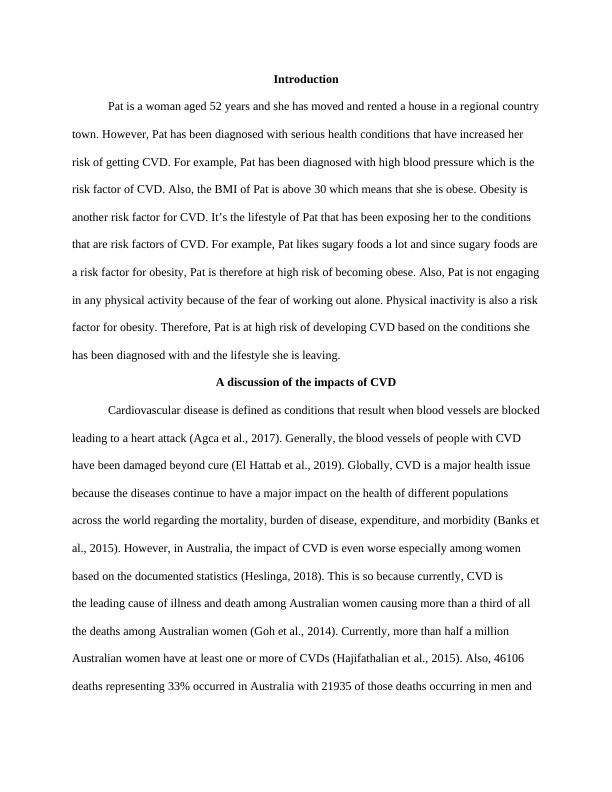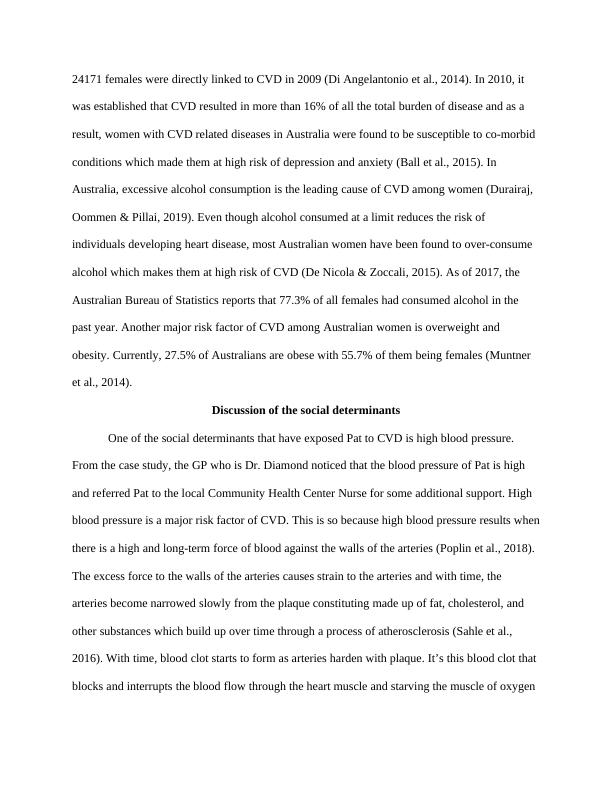Assignment On Diagnosed With Serious Health Conditions
Prepare a 1500 word report and a short 2 minute video based on a health promotion case study of a 52 year old woman with health concerns and financial difficulties.
9 Pages2890 Words20 Views
Added on 2022-10-06
Assignment On Diagnosed With Serious Health Conditions
Prepare a 1500 word report and a short 2 minute video based on a health promotion case study of a 52 year old woman with health concerns and financial difficulties.
Added on 2022-10-06
ShareRelated Documents
End of preview
Want to access all the pages? Upload your documents or become a member.
Cardiovascular Disease as an Alarming Health Issue among Obese Young Adults Population of Australia
|20
|4622
|170
Cardiovascular Disease in Australia: Risk Factors, Incidence, and Countermeasures
|8
|2033
|117
Social Determinants of Health
|7
|1220
|297
Improving Cardiovascular Health in Australian Adults: A Policy Brief
|12
|3079
|53
Health Services and Facilities Planning
|20
|3616
|174
Cardiovascular Disease and Obesity in Australian Population
|4
|834
|219



